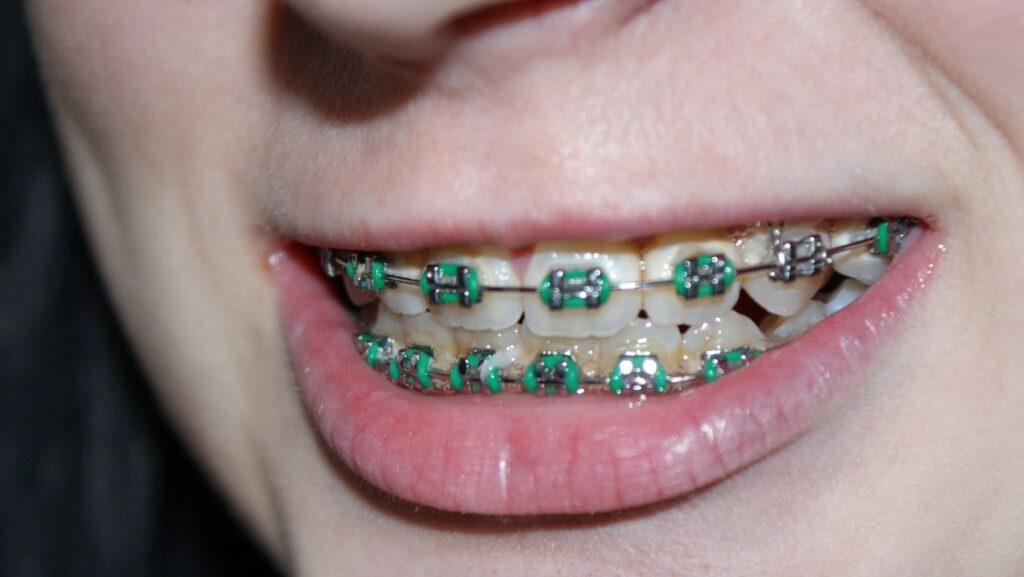Choosing the right braces and retainers can feel like navigating a maze. With a myriad of options available, how do you know what’s best for your unique dental needs? I’m here to guide you through this important decision, making it less daunting and more empowering.
In this article, we’ll explore various types of braces and retainers, their pros and cons, and how to make an informed choice. We’ll also delve into some practical tips to ensure you’re comfortable and confident with your decision. So, if you’re ready to take the first step towards a healthier, more radiant smile, let’s dive in.
Understanding Dental Braces and Retainers
As your journey towards a brilliant smile continues, let’s delve into the world of braces and retainers.
Types of Braces
When considering braces, you’ll stumble upon an array of options, each distinct in its working mechanism and aesthetic appeal. Firstly, there are the traditional metal braces, popularly utilized because of their reliability in correcting even severe orthodontic issues. They consist of fitted metal bands bonded to each tooth and linked through flexible wires.
Secondly, ceramic braces replicate the structural design of their metal counterparts but adopt ceramic material in brackets, making them more harmonious with the tooth color. Then you have the modern and almost invisible clear aligners, commonly termed Invisalign. These are detachable plastic trays tailored to fit your teeth’s exact shape, nudging them gently towards the desired alignment.
Lastly, lingual braces offer a stealthy solution, with the braces sitting behind your teeth, keeping your smile devoid of any detectable orthodontic gear. Each type carries a different price bracket, ease of cleaning, and visibility, meaning there’s an ideal solution for everyone’s unique dental needs.
Why Retainers Are Necessary
Post your braces journey, retainers step into the picture, performing the critical task of ensuring your teeth remain in their newly-fixed positions. Regardless of whether you’ve had a braces orthodontist in Penrith streamline your teeth or elsewhere, teeth have a natural tendency to return to their original positions. This movement, dubbed orthodontic relapse, is where retainers become indispensable.
Typically, retainers are fashioned out of clear plastic or metal, mirroring the shape of your teeth. They require consistent overnight usage, with a shift to occasional use as directed by your orthodontist. Embracing your retainers fits in the final, yet equally important, puzzle piece of your orthodontic treatment, securing your captivating, confident smile for years to come.
Factors to Consider When Choosing Braces
Making the right choice of braces involves a crucial assessment of various factors. First on the list is your dental condition, followed closely by your age and lifestyle, and of course, your budget considerations.
Your Dental Condition
Your specific dental condition plays a pivotal role in the type of braces best suited for your needs. For instance, severe cases such as overcrowding or serious malocclusion might require more traditional forms of treatment like metal braces. A less complex dental condition, on the other hand, might make you a good candidate for clear aligners, like Invisalign. Seek advice from a braces orthodontist to get a clear understanding of the type of braces ideal for you. Visiting an experienced orthodontic office in Greensboro can provide you with personalized recommendations and ensure you receive the best treatment options tailored to your unique needs.
Age and Lifestyle
The next crucial factor is age due to its direct correlation to the adaptability and resilience of your gums and teeth. Younger individuals may see quicker results due to faster healing and adjusting. Lifestyle considerations are also significant. Athletes or people leading active lifestyles may opt for comfortable and sturdy braces, while professionals who often meet people might prefer less visible ones, such as ceramic braces or retainers. Tri Cities Orthodontics offers a variety of treatment options tailored to different age groups and lifestyles, ensuring the best fit for each patient’s needs.
Budget Considerations
Lastly, budget considerations cannot be overlooked. The cost of braces can vary greatly based on the type and complexity of your dental condition. For example, traditional metal braces might be less expensive than clear aligners or lingual braces. As such, it’s essential to have an open discussion about fees with your braces orthodontist. You might even find affordable retainers in Penrith or seek options to spread the cost through payment plans, loans, or dental insurance.
Pros and Cons of Different Braces
Diving deeper into the world of orthodontics, let’s explore the pros and cons of different types of braces. This comparison, along with a consultation with a professional braces orthodontist, can help you make an informed decision tailored to your unique dental needs and lifestyle. For those in the area, consulting an experienced orthodontist Tallahassee can provide valuable insights and guide you toward the best option for achieving a confident, healthy smile.
Traditional Metal Braces
Traditional metal braces consist of high-grade stainless steel. They are renowned for their effectiveness in correcting even the most complex dental issues. Once adjusted, they work continuously to align your teeth. Retention after treatment can be reliably maintained with retainers in Penrith or your local area.

However, they’re visibly noticeable and food restrictions apply- consuming hard or sticky food can break a bracket or wire. Some report mild discomfort due to the metal brackets and wires.
Ceramic Braces
Ceramic braces are similar in design to metal braces but are less conspicuous due to their clear or tooth-colored hardware. They correct teeth at decent pace, relatively as efficiently as their metal counterparts, meaning fewer trips to the orthodontist.
On the downside, ceramic braces are more expensive. They can stain easily if not thoroughly cleaned, which can defeat their aesthetic appeal. Additionally, they’re a bit more brittle than metal braces, making them more susceptible to breakage.
Invisible Aligners
Popular brands like Invisalign, fall into this category. Invisible aligners are custom-fitted, removable, and virtually invisible. They offer high levels of comfort, convenience, and flexibility. For those looking to enhance their smile further, professional teeth whitening Santa Clara clinics offer can provide a bright, polished look alongside orthodontic treatments. They’re easily cleaned, have no food restrictions, and less likely to scratch your cheeks or gums.
On the flip side, invisible aligners are generally more expensive. They depend heavily on patient cooperation as they need to be worn at least 20-22 hours a day for optimal outcomes. Orthodontic treatment with invisible aligners can also take longer, especially for complex cases.
How to Care for Your Braces and Retainers
Helping your braces and retainers last longer involves diligent cleaning and regular maintenance. The following sections provide detailed guidelines on how to manage these areas effectively to ensure the health of your dental devices.
Cleaning Techniques
Brushing your dental devices properly is key to maintaining them. For braces, ensure that you clean around the wires and pins using a soft, small-headed toothbrush, or a specialized orthodontic brush designed to reach these places. Aim the brush at a 45-degree angle towards the gum line of the base of the brackets. This signifies effective cleaning in areas where food gets trapped.
As for retainers, remove them from your mouth and rinse them under warm water. Avoid hot water as it could distort the retainer. Use a soft toothbrush to clean away any residue or tartar buildup, focusing on nooks where bacteria often reside. Consider including a non-abrasive toothpaste or baking soda for a more thorough clean.
Regular Maintenance
Scheduling visits to your braces orthodontist regularly is crucial for the upkeep of your braces. These professionals will be able to adjust the tension of your braces and replace any damaged or worn-out parts.
Dentists often use specialized tools during treatments, such as dental burs, and understanding what are dental burs can provide insight into how they aid in procedures like shaping or polishing teeth.

As for the retainers, they need to be checked regularly, especially for those who use them during orthodontic treatment. There are plenty of services for retainers in Penrith that can offer repair or replacement when necessary, and provide advice on how best to care for them at home.
In addition to regular visits to an orthodontist, it’s beneficial to maintain a diligent at-home routine that includes carrying out checks on your retainers and braces. This involves looking for loose wires, checking for signs of wear and tear, and ensuring your retainers fit properly.
Maintaining the health of your braces and retainers is a testament to being proactive about your oral health. Commit to these cleaning and maintenance techniques to foster the longevity of these devices, and experience a smoother orthodontic journey.
Conclusion
Choosing the right braces and retainers is an essential step towards achieving a perfect smile. It’s not just about aesthetics but also about ensuring that your dental health is in top shape. Remember, there’s no one-size-fits-all solution. From traditional metal braces to ceramic options and clear aligners like Invisalign, each type comes with its own set of benefits and drawbacks. Your age, dental condition, lifestyle, and budget all play a role in this significant decision. But don’t forget, once you’ve made your choice, the journey doesn’t end there. Caring for your braces and retainers is equally important. Regular cleaning, maintenance, and orthodontist visits are crucial to ensure these dental devices serve you well. So, make an informed decision and embrace the journey to a better smile with confidence. After all, it’s your smile, and it deserves the best care possible.

